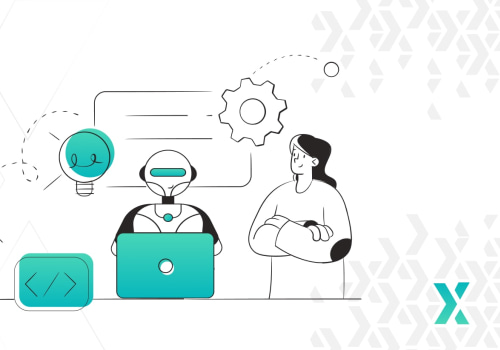For example, chatbots and assistants like Siri and Alexa use NLP to interpret what the user is saying and provide a response. AI in customer care generally uses these two approaches to help both users and customer service representatives. Advances in AI continue to pave the way for increased efficiency across the organization, especially in customer service. Chatbots are still at the forefront of this change, but other technologies, such as machine learning and interactive voice response systems, create a new paradigm of what customers (and customer service agents) can expect.
Not every technology is right for every organization, but AI will be critical to the future of customer service. Here are 10 examples of the future of AI in customer service. One of the most common uses of AI in customer service is chatbots. Companies are already using chatbots of varying complexity to manage routine questions such as delivery dates, the balance due, the status of orders, or anything else derived from internal systems.
By moving these FAQs to a chatbot, the customer service team can help more people and create a better overall experience, while reducing operating costs for the company. At its core, machine learning is key to processing and analyzing large flows of data and determining what actionable information exists. In customer service, machine learning can help agents with predictive analytics identify common questions and answers. The technology can even detect things that an agent may have missed in communication.
In addition, machine learning can be used to help chatbots and other AI tools adapt to a given situation based on previous results and, ultimately, help customers solve problems through self-service. As the COVID-19 pandemic forced employees to occupy remote positions, many training teams began using AI to create simulations that would test employees' ability to deal with various situations. Previously, training included a combination of classroom training, self-paced learning, and a final evaluation, a routine that is much more difficult to implement in remote or hybrid offices. With AI taking on the role of the customer, new agents can test dozens of possible scenarios and practice their responses with natural counterparts to ensure that they are prepared to address any problem a user or customer may have.
One of the most common uses of AI in customer service is customer service chatbots. Companies use chatbots for a variety of reasons, with the automation of customer service interactions being the main one. Support teams use chatbots to automate the most repetitive and redundant customer service inquiries. This includes information for routine questions about personal accounts, order status, and use of products or services, and much more, depending on the company's industry.
One of the most common examples of AI in customer service is chatbots. AI is also often used to do things like predict wait times, synthesize resolution data, and personalize unique customer experiences. When a virtual assistant can't fully help customers, AI will use intelligent routing to direct the customer to the right teams or departments to continue customer service. This smart route can also be used for routes outside working hours and on holidays.
Through natural language processing, AI can be used to analyze what people say about a company in order to create reports that can be used to improve customer service. AI affects customer service by allowing support teams to automate simple resolutions, manage tickets more efficiently, and use machine learning to learn about customer problems. One of the best ways to determine where RPA can help with customer service is by asking customer service agents. AI is an impressive tool for improving customer service, keeping up with the competition, and meeting ever-changing consumer expectations.
Therefore, a renewed AI-based customer service model encompasses all touchpoints, not just digital self-service channels, but also agent-supported options in branches or on social media platforms, where AI can help employees in real time achieve high-quality results. Practical applications for organizations and customer service teams are still in progress, but smart assistants like Alexa, Google Assistant, and Siri are an interesting avenue for personalized service. From customer service agents to the companies that employ them, here's what back-end users can get from AI. To learn more about the power that AI has for customer service, here are 11 examples of how AI is changing and having an impact on customer service.
Therefore, companies are turning to AI to deliver the proactive, personalized service that customers want, when and how they want it, sometimes even before they know they want it. Overall, the AI industry is growing rapidly, and deployment in the customer service space is doing the same. As demand for an improved and personalized customer experience grows, organizations are turning to AI to help close the gap. In many modern omnichannel contact centers, agent assistance technology uses AI to automatically interpret what the customer asks, search for knowledge items, and display them on the customer service agent's screen while on the call.
Customer service leaders face challenges ranging from selecting the most important use cases for AI to integrating technology with legacy systems and finding the right talent and organizational governance structures. .











